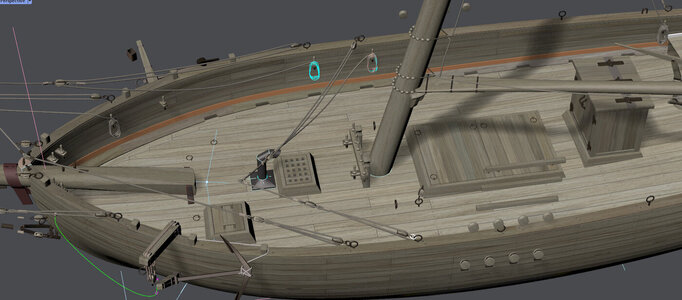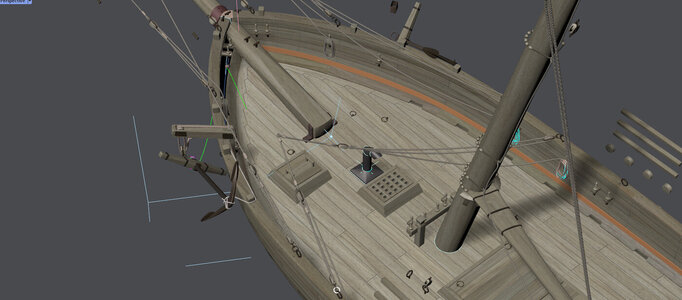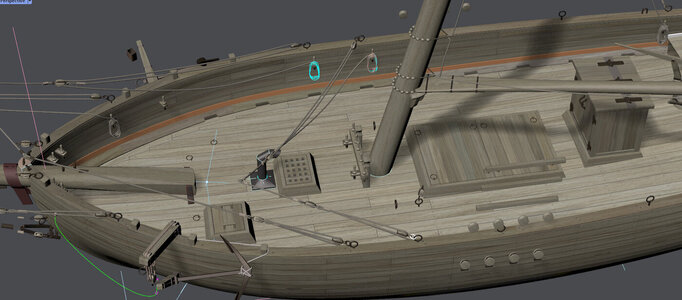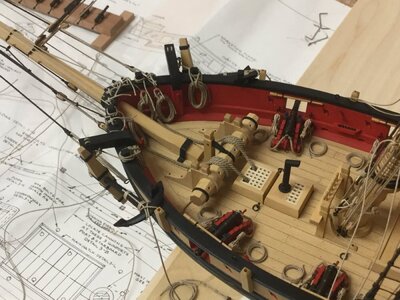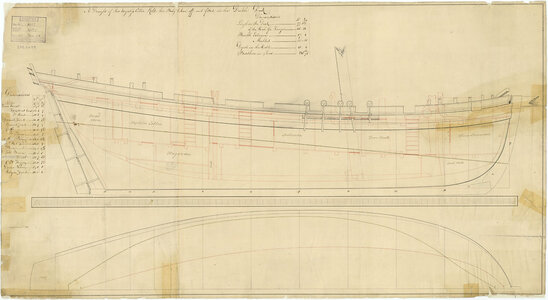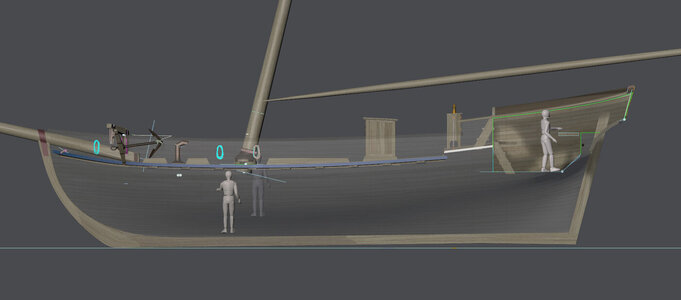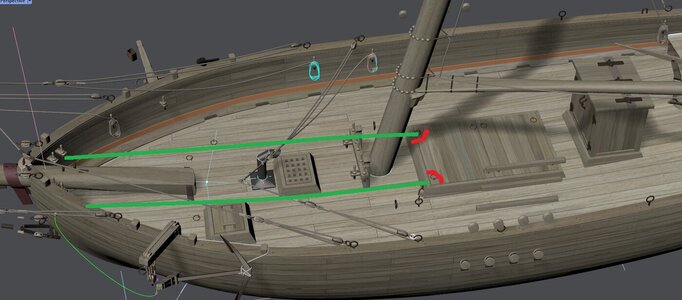This is in regards to a digital model I am building of the Armed Virginia Sloop, only I am making it unarmed
This seems like a simple question, but the ‘answers’ I see looking at the book or builds seem odd to me
The book says to run the end of the cable down through the grate on the forward hatch
All but one of the builds I have looked at follow this advice
It seems to me that if the cable was tied off to something below the grate, when the ship pulled on the anchor it would destroy the grate
This seems like a simple question, but the ‘answers’ I see looking at the book or builds seem odd to me
The book says to run the end of the cable down through the grate on the forward hatch
All but one of the builds I have looked at follow this advice
It seems to me that if the cable was tied off to something below the grate, when the ship pulled on the anchor it would destroy the grate




 cables were led to the bitter end in the cable storage locker. hence the term the "Bitter End" when refering to something on its last legs it was usually a smaller rope so that it could be cut in an emergency after putting a buoy on the anchor cable so they could find it again
cables were led to the bitter end in the cable storage locker. hence the term the "Bitter End" when refering to something on its last legs it was usually a smaller rope so that it could be cut in an emergency after putting a buoy on the anchor cable so they could find it again

